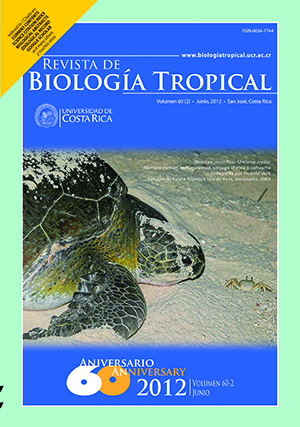Abstract
Many coral reef fish exhibit habitat partitioning throughout their lifetimes. Such patterns are evident in the Caribbean where research has been predominantly conducted in the Eastern region. This work addressed the paucity of data regarding Honduran reef fish distribution in three habitat types (seagrass, mangroves, and coral reefs), by surveying fish on the islands of Utila and Cayos Cochinos off the coast of Honduras (part of the Mesoamerican barrier reef). During July 2nd - Aug 27th 2007 and June 22nd - Aug 17th, 2008, visual surveys (SCUBA and snorkel) were performed in belt transects in different areas: eleven coral reef, six seagrass beds, and six mangroves sites. Juvenile densities and total habitat surface area were used to calculate nursery value of seagrass and mangroves. A total of 113 fish species from 32 families were found during underwater surveys. Multi-dimensional analyses revealed distinct clusters of fish communities in each habitat type by separating fish associated with seagrass beds, mangroves, and coral reefs. Coral reefs showed the highest mean fish species richness and were dominated by adult fish, while juvenile fish characterized seagrass beds and mangrove sites. Habitat use differed widely at the fish species level. Scarus iseri (Striped Parrotfish), the most abundant fish in this study, were found in all three habitat types, while Lutjanus apodus (Schoolmaster Snapper) juveniles were located primarily in mangroves before migrating to coral reefs. Many species used seagrass beds and mangroves as nurseries; however, the nursery value could not be generalized at the family level. Furthermore, for some fish species, nursery value varied between islands and sites. Our results suggest that connectivity of seagrass, mangrove, and coral reef sites at a species and site levels, should be taken into consideration when implementing policy and conservation practices.
This work is licensed under a Creative Commons Attribution 4.0 International License.
Copyright (c) 2012 Revista de Biología Tropical
Downloads
Download data is not yet available.

